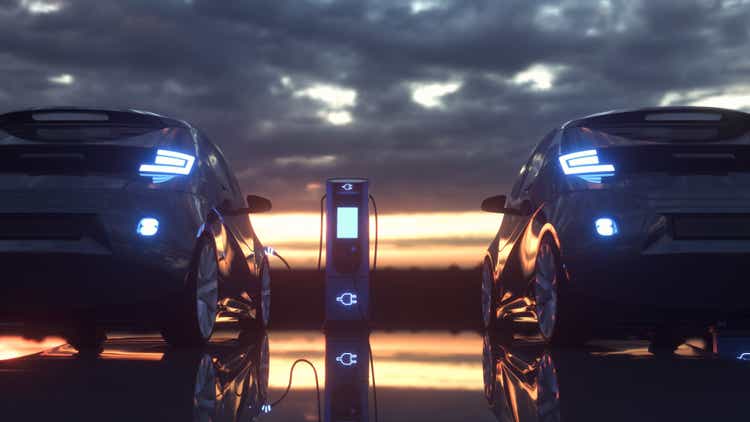Дмитрий Ларичев/iStock via Getty Images
By Rick Bradt
As thematic investors with an eye toward long-term, structural business trends, we are regularly tasked with evaluating the long-term outlook—and sustainability—of innovative businesses and the industries they seek to disrupt.
Across markets as wide-ranging as streaming media and smartphones, from electric cars to electric razors, from online retailers to online realtors, and more, innovative industry newcomers can emerge as market-share leaders, displacing entrenched incumbents as industries change. However, there is a wide gap between earning market share (a worthy objective) and earning the lion’s share (the largest or dominant share), with implications for investors searching for tomorrow’s successful companies.
Today, nowhere is this battle for market share (and lion’s share) more apparent than in the fast-growing market for electric vehicles. Here, substantially an entire industry is dominated by 10 large automotive incumbents focused on internal combustion engine (ICE) vehicles. In aggregate, these incumbents generate roughly $1.5 trillion in annual sales, reflecting more than 65 million cars sold each year. By comparison, electric vehicle sales (including hybrids) recently achieved roughly 10 percent of that annual volume— approximately 6.5 million units. Within that, the largest individual electronic vehicle (EV) manufacturer somewhat famously delivered nearly 1 million vehicles to new EV owners in 2021—a substantial milestone for the industry, no less for a young company.
Annual unit sales and corresponding revenues provide only part of the story, however: Today, these same 10 incumbents command a market capitalization of roughly $1 trillion. This is roughly the same market capitalization as the single largest pure-play electric vehicle manufacturer.
As with comparable market-share battles between tenacious innovators and entrenched incumbents, several questions arise to help handicap the possible long-term outcome of today’s EV market battle:
Can today’s innovative EV manufacturers continue to outpace the technical and manufacturing successes of automotive incumbents 10 times their age and size?
As asked previously of innovators in markets as diverse as streaming media and semiconductors, can early EV leaders broaden their initial offerings to achieve product scale and breadth typical of long-term market-share leaders?
Can ICE industry incumbents prove sufficiently adept at reinventing themselves to help assure they – and not their competitors – dominate the EV market of the future?
The future will likely determine how today’s electric vehicle battle plays out and whether, as has often proved true in other industries, the innovative newcomer can move beyond market share and into the lion’s share.
Investing entails risks, including possible loss of principal. Investments in hedge funds and private equity are speculative and involve a higher degree of risk than more traditional investments. Investments in hedge funds and private equity are intended for sophisticated investors only. Indexes are unmanaged and are not available for direct investment. Past performance is no guarantee of future results.
This material is being issued on a limited basis through various global subsidiaries and affiliates of Neuberger Berman Group LLC. Please visit www.nb.com/disclosure-global-communications for the specific entities and jurisdictional limitations and restrictions.
The “Neuberger Berman” name and logo are registered service marks of Neuberger Berman Group LLC.
© 2009-2022 Neuberger Berman Group LLC. All rights reserved.
Editor’s Note: The summary bullets for this article were chosen by Seeking Alpha editors.


Be the first to comment